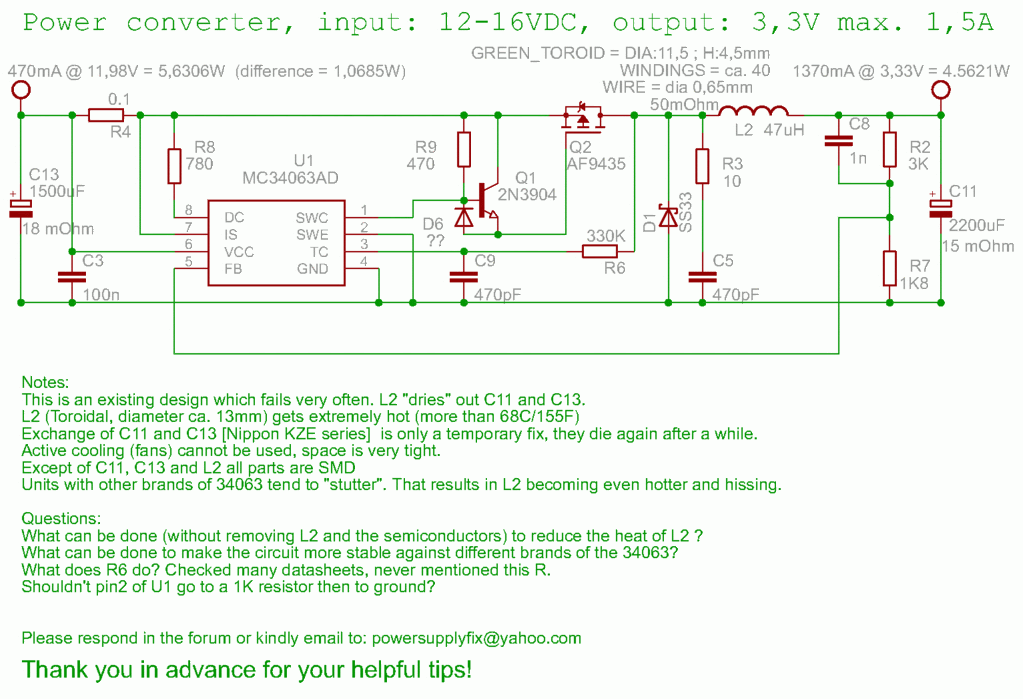help_with_powersupply
Newbie level 6
mc34063a
Hi,
I have to amend an existing circuit consisting of a MC34063A and a P-MOS switch.
It is a downconverter, from 12V to 3.3V/1.5A .
I, like you, do this out of helping and am not being paid. This is for a good cause.
The circuit has a coil which gets extremely hot, so hot, that it kills the neighboring capacitors over time.
Exchanging them is only a temporary fix, they die again after a while.
I cannot use a fan and cannot replace the SMD semiconductors or the coil.
Only capacitors or resistors can be removed/exchanged.
Semiconductors can be piggy packed however.
From what I researched, it is quite a standard design of the MC34063A with a P-MOS transistor for more Amps.
What can be done in general to reduce the heat of the coil?
Is it the efficiency or do these coils just get this hot (60 C, 150 F)?
The capacitors are rated only 5000h, are there types which can last for 3-5 years?
I could make a schematic if it would help.
Thanks in advance for your helpful reply!
Hi,
I have to amend an existing circuit consisting of a MC34063A and a P-MOS switch.
It is a downconverter, from 12V to 3.3V/1.5A .
I, like you, do this out of helping and am not being paid. This is for a good cause.
The circuit has a coil which gets extremely hot, so hot, that it kills the neighboring capacitors over time.
Exchanging them is only a temporary fix, they die again after a while.
I cannot use a fan and cannot replace the SMD semiconductors or the coil.
Only capacitors or resistors can be removed/exchanged.
Semiconductors can be piggy packed however.
From what I researched, it is quite a standard design of the MC34063A with a P-MOS transistor for more Amps.
What can be done in general to reduce the heat of the coil?
Is it the efficiency or do these coils just get this hot (60 C, 150 F)?
The capacitors are rated only 5000h, are there types which can last for 3-5 years?
I could make a schematic if it would help.
Thanks in advance for your helpful reply!









